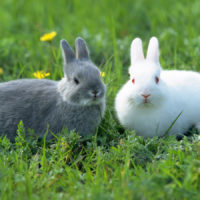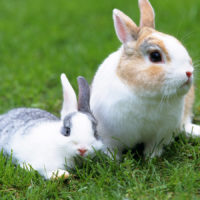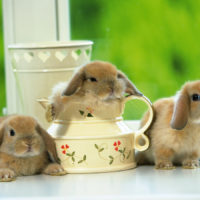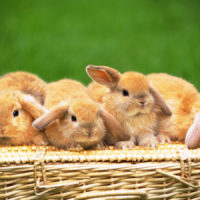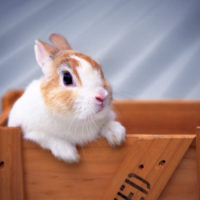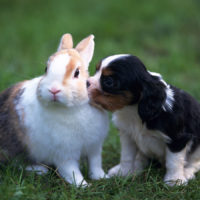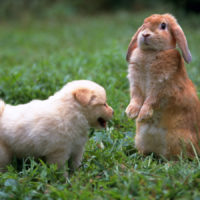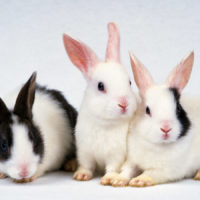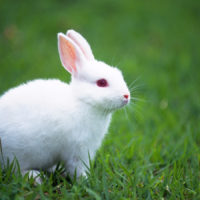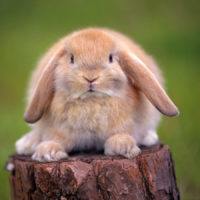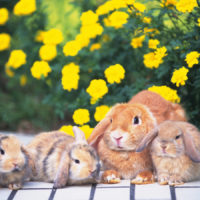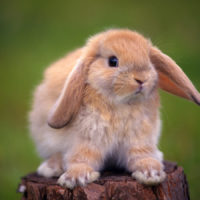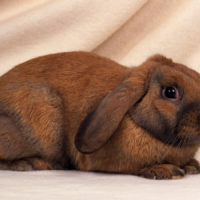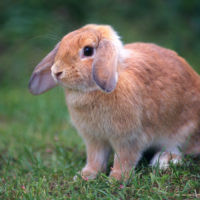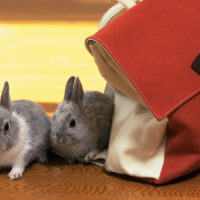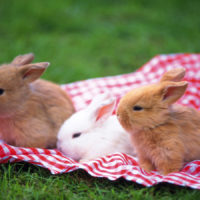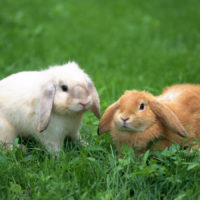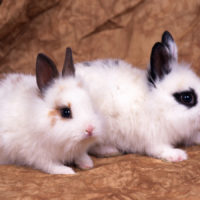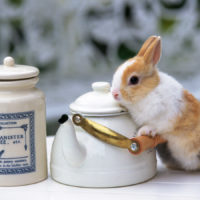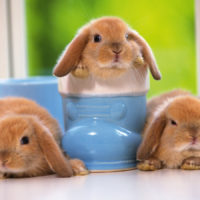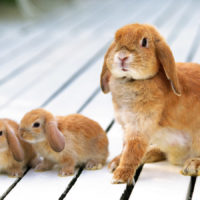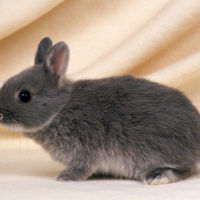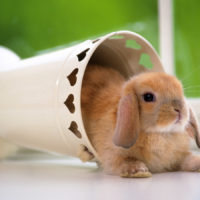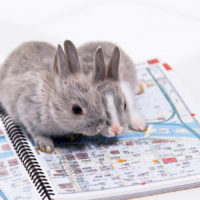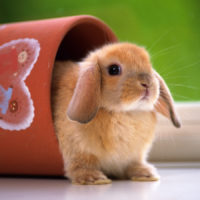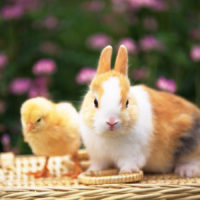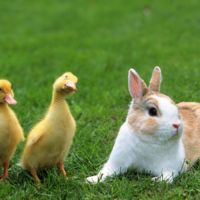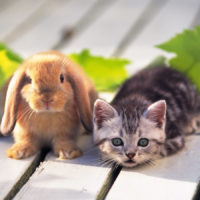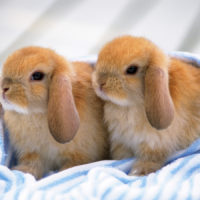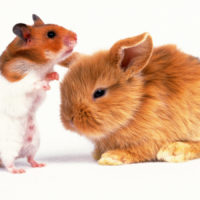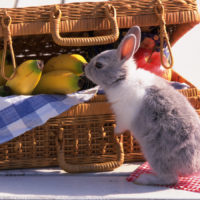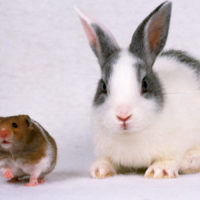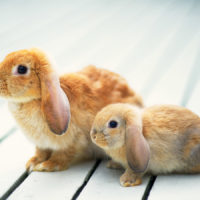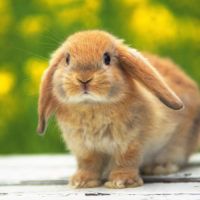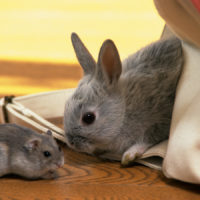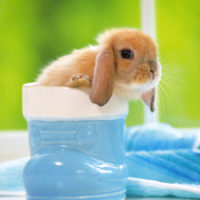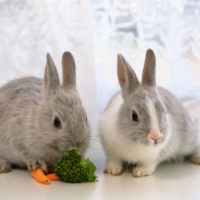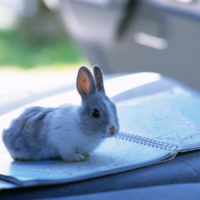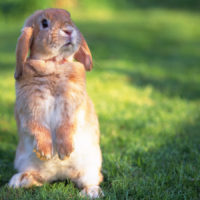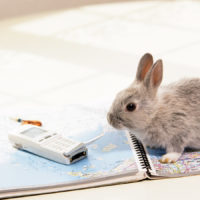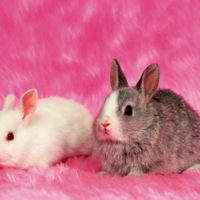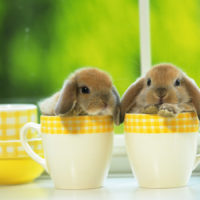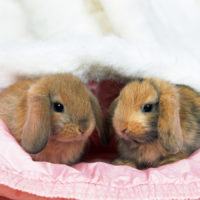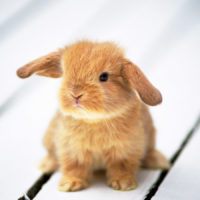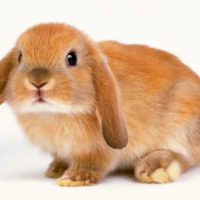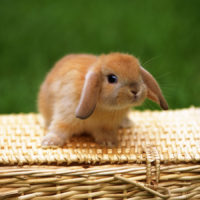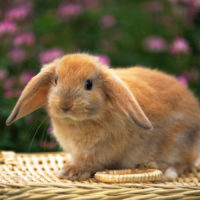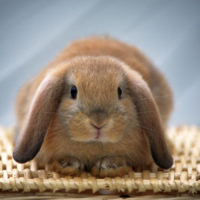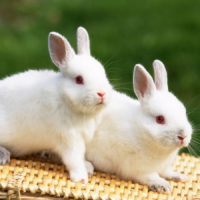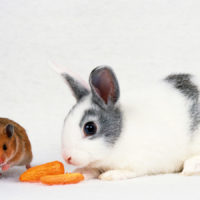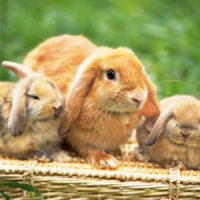In the wild, rabbits have plenty to keep them occupied, from foraging to reproduction to territorial defense. Captive rabbits, on the other hand, often lack stimulation, which can lead to behavioural problems and poor health.
Interesting facts about Rabbits
Rabbits have an excellent sense of smell, hearing and vision. They have nearly 360° panoramic vision, allowing them to detect predators from all directions. They can see everything behind them and only have a small blind-spot in front of their nose.
Rabbits have extremely strong hind limbs which allow them to leap great distances. They can jump up to one metre high and three metres long.
Although typically very quiet, rabbits do communicate vocally, with varying types of vocalisations communicating different messages, e.g. low humming when running around an individual is a signal of affection.
Rabbits stand upright on their hind legs to give themselves a better vantage point to look for predators. They alert other rabbits to the presence of danger by thumping their hind legs.
For the last 60 years rabbits have been increasingly commonly kept as pets in the UK and other countries. In the last ten years there has been an especially big increase in the UK making them the nation’s third most popular furry pet. In 2010 about 1 million rabbits were kept as pets. However, before taking on the commitment of caring for a rabbit as a pet consideration should be given to whether its physical and emotional needs can be met. Properly caring for an animal as a pet can have significant time and cost implications. For example caring for a rabbit is likely to cost more than £3,000 over the course of its lifetime.
People often think rabbits are very easy to look after and that all they need to do is pop them in a hutch in the garden and feed and clean them when needed. However, this is actually very far from the truth. Nowadays, we have a far greater understanding of rabbits and there are a few things we need to recognise in order to keep them happy. Rabbits expressing aggressive behaviour toward people and other pets often indicates they are in distress and suffering emotionally.
They need an appropriate diet. Fibre, in the form of hay and grass, is the most vital food for rabbits – it’s essential for their digestive health, and they can die without it. Whilst a small daily amount of green veg is good, a diet based solely on vegetables, fruit and carrots does not provide all the nutrients that rabbits need, leaving them malnourished.
Digging is an innate and favourite pastime of rabbits, both wild and domesticated. By providing digging substitutes, such as a sand or earth pit, rabbits kept as pets will be able to dig away without damaging your garden or escaping.
Just like humans, rabbits become bored if their environments remain the same, so can benefit from variety and occasional change of scenery. However, too much change can have adverse effects. A wild rabbit’s survival depends on an intimate knowledge of its surroundings in order to escape from predators, so structural changes to the “warren” of a rabbit kept as a pet should be kept subtle, such as changing their toys and regularly providing new ones.
It’s incredibly beneficial for rabbits kept as pets to start interacting with people, other rabbits and also other pets such as cats and dogs from an early age. Familiarity with other species will help rabbits develop into friendly and confident adults. Exposing them to normal everyday sights and sounds is also important, so they’re relaxed and happy in their environments.
Not many people know that rabbits can be trained. Those kept as pets can really benefit from reward-based training. For example, they can be trained to exercise and go over small jumps, which in turn is great for their health. Being active reduces the risk of rabbits becoming overweight and even obese, as well as providing physical and mental stimulation.
The gentle timid nature of rabbits saw them used by many Renaissance artists representing purity and the unquestioning faith in religion, for example Titian’s Madonna with Rabbit (1530).
Rabbits Wallpapers Collection


